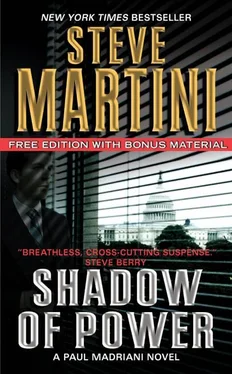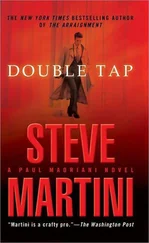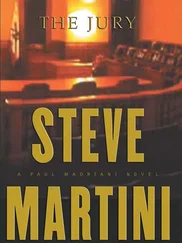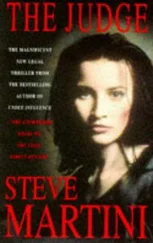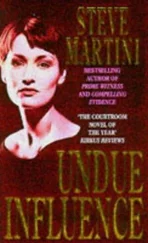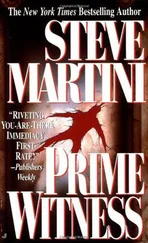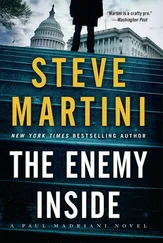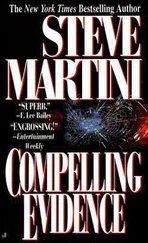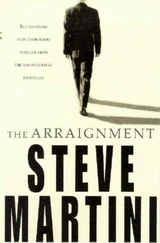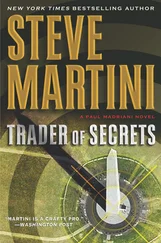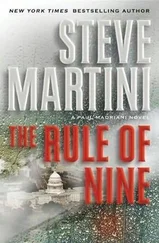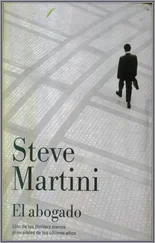The mob carnival, what’s left of it, is not even a shadow of the beast from the first day. There are a few signs, one small group, maybe twelve or fifteen, walking in a circle chanting some mumbled mantra-St. Apathy’s Order of Indifferent Monks. A few teenagers in baggy pants, their belts down at knee level, are laughing and cavorting, gangsta wannabes, jumping from the steps trying to get on camera. In front of them with their backs to the kids, a line of reporters like victims at a firing squad stand erect, talking into an opposing line of cameras.
It is difficult to sustain the fighting morale of a fevered following when the bone over which you’re snarling turns into cerebral, scientific evidence. Still, Harry and I know that the armies of Hannibal and the Carthaginians will be back, and in full war paint, just as soon as they hear that a jury is about to boot the ball through somebody’s goalpost.
Tuchio brings on the medical examiner, Dr. Dwight James. The courtroom is filled to overflowing. Judge Quinn warns family members and friends of the victim that they may wish to leave the room, for there will be lurid descriptions and graphic images.
Here things get much worse, for the reason that the M.E. brings along his own set of photos, pictures from the autopsy he performed on Scarborough at the morgue.
While Harry and I fought tooth and nail to keep most of these out, at some point the judge threw up his hands and admonished us once more that after all there was a crime and it involved a dead body.
The problem with many autopsy pictures is that, depending on the case, they can be much more graphic than shots taken at the scene. As they look at the photos on the overhead, I can tell that some of the jurors are having a hard time reconciling these with the person they saw beaming at them from the back of Scarborough’s book during Tuchio’s opening statement.
In the first shot, Scarborough is lying on the slab faceup. The blood from the wounds has been washed away, so that the lifeless complexion of his face is the white pallor of bleached paper. His mouth yawns, dragged open by the dropped chin that seems to hang slack as if it were not attached to the upper part of his head. All resemblance to the living form is gone.
The photos go downhill from there, shots of the scalp severed from the rear of the head and dropped like a flap over the victim’s face so that the M.E. can better examine the wounds.
The pictures are hideous enough that many of the jurors avert their eyes, so that when I look over again, they are staring at Carl. Arnsberg has not been able, since Dr. James began, to even look at the screen. Instead his gaze is fixed on his hands, clasped and resting on the table in front of him. His head and upper body are swaying back and forth as if he were in a rocking chair. Were he the subject of a van Gogh painting, you might title the image Man Teetering on the Edge.
According to Dr. James’s testimony, his examination revealed seventeen separate stab wounds to the back of the head, neck, and top of the cranial area of the victim. Each of these involved a double set of puncture wounds, one from each of the two claws of the hammer head.
The medical examiner testifies that Scarborough was rendered unconscious by the first blow, the only merciful thing, it seems, the witness has to say.
There are sounds of sobbing coming from out in the audience. Quinn raises his gavel, about to silence it, when he realizes it is coming from Scarborough’s sister, seated in the second row. Instead the judge motions with the gavel to one of the deputies. A moment later she is ushered to the door, the deputy with one hand on her arm, the other over her shoulder to steady her.
Dr. James picks up where he left off. Based on the autopsy, the witness believes that the first blow was administered to the right side of the victim’s head just below the temporal lobe and below and behind the right ear. Here the hammer’s claws penetrated both bone and tissue to a depth of more than three inches. It may not sound like much, but according to the witness the angle of entry and the location allowed the sharp metal claws to reach the victim’s brain stem, the medulla oblongata, where the spinal column joins the base of the brain.
“From that instant,” says James, “the victim was unconscious and his body was paralyzed.” He asserts that this and the element of total surprise account for the complete absence of any defensive wounds on the hands or arms of the victim. He simply never had a chance to turn and defend himself.
“Was this a mortal wound?” asks Tuchio.
“For all intents and purposes, it was. Within minutes a victim suffering this type of wound would die, since the medulla, the brain stem, controls vital functions such as respiration and heart rate.”
Tuchio then has the witness take the jury on a tour of the rest of the wounds, almost every one of which would have been fatal, as all but two of these punctured the skull and entered the brain at various locations.
According to the wound patterns, it is Dr. James’s opinion that the assailant, who approached the victim from behind, was right-handed and that he used two hands to wield the hammer for maximum force. This latter conclusion is based upon the torque, or twisting action, evident in the claw wounds as they penetrated the skull. As the doctor puts it, “This was the kind of torque you might see on the head of a golf club from the over-and-under grip on the club’s handle as it turned through the arc of a swing.”
“Could you tell,” asks Tuchio, “whether these separate blows-I think you said seventeen in all-”
“That’s correct.”
“Were they administered slowly over a period of, say, many seconds or minutes, or were they done quickly, in rapid succession?”
“No. No. In my opinion they were administered in rapid succession, in the time it would take to remove the claws from the previous wound, extend the arms fully for the next blow, and swing. The only thing that might slow the assailant down was if the claws got hung up or if the assailant was forced to stop from sheer physical fatigue.”
According to the witness, it was the latter, fatigue, that finally ended the attack. The killer simply became too exhausted to continue.
“Dr. James, can you tell the jury, is there a word or a term for this kind of attack?”
“There is.”
“And what is that word?”
“It’s called ‘rage.’ Sometimes the term ‘rage killing’ is applied.”
“Why is that?”
“Because of the frenzied nature of the attack and the fact that the evident emotional and physical energy expended is far more than anything reasonably necessary to deliver a mortal wound or to achieve the objective of simply killing the victim. The attack in a case of rage reveals a desire on the part of the assailant to destroy the victim, to erase him from existence, not simply kill him.”
As the witness says this, Tuchio is looking at Carl, as if to focus the jury’s attention on the defendant. I can tell by the satisfied expression on his face that the prosecutor has already measured how he can use all this in his closing argument.
“Doctor, is it safe to assume that there could be any number of emotional triggers that might bring on a rage killing?”
“There are.”
“Can you give us some examples?”
“A frustrated romantic liaison, a jealous lover. It could be based on a long-standing feud between the assailant and the victim, something that may have gone on for years seething under the surface.”
“In your experience, in the cases that you’ve seen or studied, would a rage killing require that the victim know his assailant?”
“No.”
“So as far as the victim is concerned, the killer could be a complete stranger, somebody that he or she doesn’t even know?”
Читать дальше
